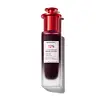What's inside
What's inside
 Key Ingredients
Key Ingredients

 Benefits
Benefits

 Concerns
Concerns

 Ingredients Side-by-side
Ingredients Side-by-side

Water
Skin ConditioningGlycolic Acid
BufferingLactic Acid
BufferingSuccinic Acid
BufferingSodium Hydroxide
BufferingSalicylic Acid
MaskingNiacinamide
SmoothingCapryloyl Salicylic Acid
ExfoliatingGluconolactone
Skin ConditioningLactobionic Acid
BufferingGlycerin
HumectantXanthan Gum
Emulsifying1,2-Hexanediol
Skin ConditioningHydroxyacetophenone
AntioxidantButylene Glycol
HumectantPropylene Glycol
HumectantEnantia Chlorantha Bark Extract
Skin ConditioningGardenia Florida Fruit Extract
Skin ConditioningGlycerophosphoinositol Choline
Skin ProtectingBacillus Ferment
Skin ConditioningBrassica Oleracea Acephala Leaf Extract
HumectantPhenoxyethanol
PreservativePotassium Sorbate
PreservativeEthylhexylglycerin
Skin ConditioningOleanolic Acid
Skin ConditioningCyclodextrin
AbsorbentWater, Glycolic Acid, Lactic Acid, Succinic Acid, Sodium Hydroxide, Salicylic Acid, Niacinamide, Capryloyl Salicylic Acid, Gluconolactone, Lactobionic Acid, Glycerin, Xanthan Gum, 1,2-Hexanediol, Hydroxyacetophenone, Butylene Glycol, Propylene Glycol, Enantia Chlorantha Bark Extract, Gardenia Florida Fruit Extract, Glycerophosphoinositol Choline, Bacillus Ferment, Brassica Oleracea Acephala Leaf Extract, Phenoxyethanol, Potassium Sorbate, Ethylhexylglycerin, Oleanolic Acid, Cyclodextrin
Water
Skin ConditioningLactic Acid
BufferingPropylene Glycol
HumectantGlycerin
HumectantAlpha-Arbutin
AntioxidantBiosaccharide Gum-1
HumectantPolyacrylate Crosspolymer-11
Emulsion StabilisingPhenoxyethanol
PreservativeSodium Hydroxide
BufferingSaccharide Isomerate
HumectantHydroxyethylcellulose
Emulsion StabilisingAllantoin
Skin ConditioningBis-PEG-18 Methyl Ether Dimethyl Silane
EmollientSodium Bisulfite
AntioxidantPanthenol
Skin ConditioningTriethylene Glycol
MaskingSodium Hyaluronate
HumectantCitric Acid
BufferingSodium Citrate
BufferingWater, Lactic Acid, Propylene Glycol, Glycerin, Alpha-Arbutin, Biosaccharide Gum-1, Polyacrylate Crosspolymer-11, Phenoxyethanol, Sodium Hydroxide, Saccharide Isomerate, Hydroxyethylcellulose, Allantoin, Bis-PEG-18 Methyl Ether Dimethyl Silane, Sodium Bisulfite, Panthenol, Triethylene Glycol, Sodium Hyaluronate, Citric Acid, Sodium Citrate
 Reviews
Reviews

Ingredients Explained
These ingredients are found in both products.
Ingredients higher up in an ingredient list are typically present in a larger amount.
Glycerin is already naturally found in your skin. It helps moisturize and protect your skin.
A study from 2016 found glycerin to be more effective as a humectant than AHAs and hyaluronic acid.
As a humectant, it helps the skin stay hydrated by pulling moisture to your skin. The low molecular weight of glycerin allows it to pull moisture into the deeper layers of your skin.
Hydrated skin improves your skin barrier; Your skin barrier helps protect against irritants and bacteria.
Glycerin has also been found to have antimicrobial and antiviral properties. Due to these properties, glycerin is often used in wound and burn treatments.
In cosmetics, glycerin is usually derived from plants such as soybean or palm. However, it can also be sourced from animals, such as tallow or animal fat.
This ingredient is organic, colorless, odorless, and non-toxic.
Glycerin is the name for this ingredient in American English. British English uses Glycerol/Glycerine.
Learn more about GlycerinLactic Acid is another well-loved alpha hydroxy acid (AHA). It is gentler than glycolic acid but still highly effective.
Its main role is to exfoliate the surface of the skin by loosening the “glue” that holds dead skin cells together. Shedding those old cells leads to smoother, softer, and more even-toned skin.
Because lactic acid molecules are larger than glycolic acid, they don’t penetrate as deeply. This means they’re less likely to sting or irritate, making it a great choice for beginners or those with sensitive skin.
Like glycolic acid, it can:
Lactic acid also acts as a humectant (like hyaluronic acid). It can draw water into the skin to improve hydration and also plays a role in the skin's natural moisturizing factor (NMF) in the form of sodium lactate.
Studies show it can boost ceramide production to strengthen the skin barrier and even help balance the skin’s microbiome.
To get results, choose products with a pH between 3-4.
Lower strengths (5-12%) focus on surface exfoliation; higher strengths (12% and up) can reach deeper in the dermis (deeper, supportive layer) to improve skin texture and firmness over time.
Though it was originally derived from milk, most modern lactic acid used in skincare is vegan. It is made through non-dairy fermentation to create a bio-identical and stable form suitable for all formulations.
When lactic acid shows up near the end of an ingredient list, it usually means the brand added just a tiny amount to adjust the product’s pH.
Legend has it that Cleopatra used to bathe in sour milk to help reduce wrinkles.
Lactic acid is truly a gentle multitasker: it exfoliates, hydrates, strengthens, and brightens. It's a great ingredient for giving your skin a smooth, glowing, and healthy look without the harshness of stronger acids.
Read more about some other popular AHA's here:
Learn more about Lactic AcidPhenoxyethanol is a preservative that has germicide, antimicrobial, and aromatic properties. Studies show that phenoxyethanol can prevent microbial growth. By itself, it has a scent that is similar to that of a rose.
It's often used in formulations along with Caprylyl Glycol to preserve the shelf life of products.
Propylene Glycol is an odorless, colorless liquid. As a humectant, it helps skin retain moisture. It also aids in delivering active ingredients.
Another role of this ingredient is preventing a product from melting or freezing. Propylene glycol also adds antimicrobrial properties to a product, elongating product lifespan.
This ingredient is considered an organic alcohol and commonly added into both cosmetics and foods.
Those with sensitive skin or conditions may develop a rash when using this ingredient.
Learn more about Propylene GlycolSodium Hydroxide is also known as lye or caustic soda. It is used to adjust the pH of products; many ingredients require a specific pH to be effective.
In small amounts, sodium hydroxide is considered safe to use. However, large amounts may cause chemical burns due to its high alkaline.
Your skin has a natural pH and acid mantle. This acid mantle helps prevent harmful bacteria from breaking through. The acid mantle also helps keep your skin hydrated.
"Alkaline" refers to a high pH level. A low pH level would be considered acidic.
Learn more about Sodium HydroxideWater. It's the most common cosmetic ingredient of all. You'll usually see it at the top of ingredient lists, meaning that it makes up the largest part of the product.
So why is it so popular? Water most often acts as a solvent - this means that it helps dissolve other ingredients into the formulation.
You'll also recognize water as that liquid we all need to stay alive. If you see this, drink a glass of water. Stay hydrated!
Learn more about Water